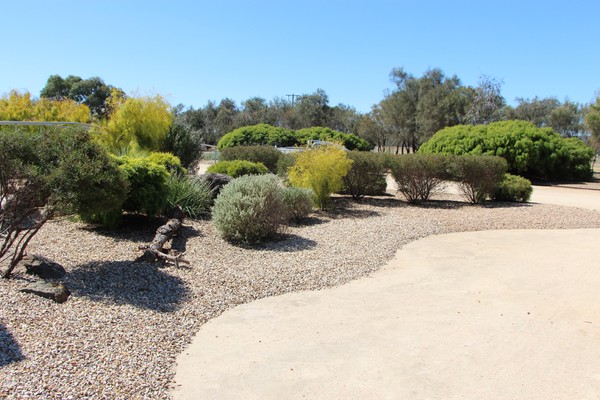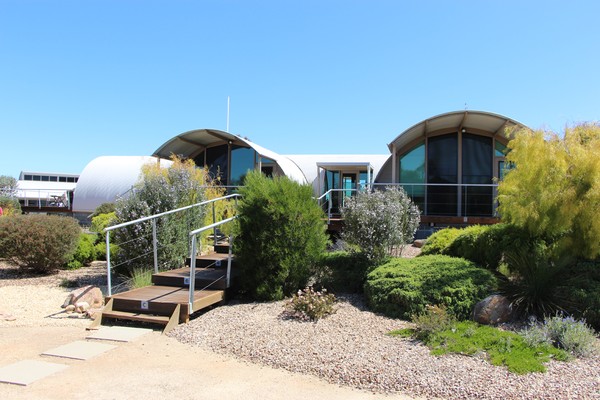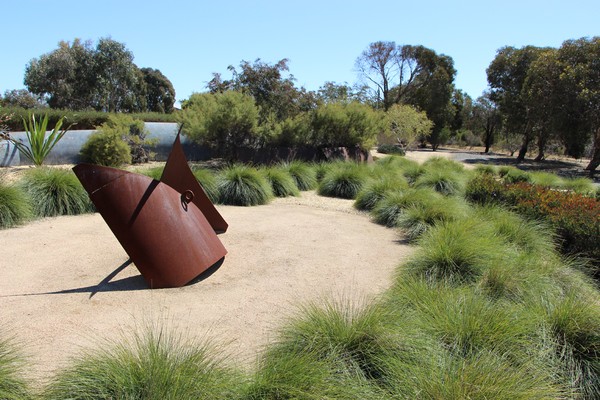Garden Design Study Group: Lewin Garden
‘Grannes’, Stawell, Victoria
The garden is about 15 years old and was originally designed by Barbara Redding. Some of the initial planting remains, including hakeas with impressive rows of two forms of Hakea petiolaris, different in both form and foliage. The garden around the modern house is well developed with many beautiful plants and some formal aspects to the design, including sculpture and an oriental courtyard. There is also an attractive small pond. Large clear areas around the house and its gardens are covered with gravels and stones of different sizes. The soil can be difficult, with both clay and stones. Andrew (gardener) plans to use gypsum and organic material to improve the structure. Inorganic mulch, including in one area crushed offcuts from headstones, is used to shade roots and reduce evaporation.
For more information on this garden see Garden Design Study Group Newsletter 88, November 2014, p. 23 and GardenDrum, “Grannes: Australian garden design for dry climates”. Angus Stewart, November 5, 2015





 Australian Native Plants Society (Australia)
Australian Native Plants Society (Australia)